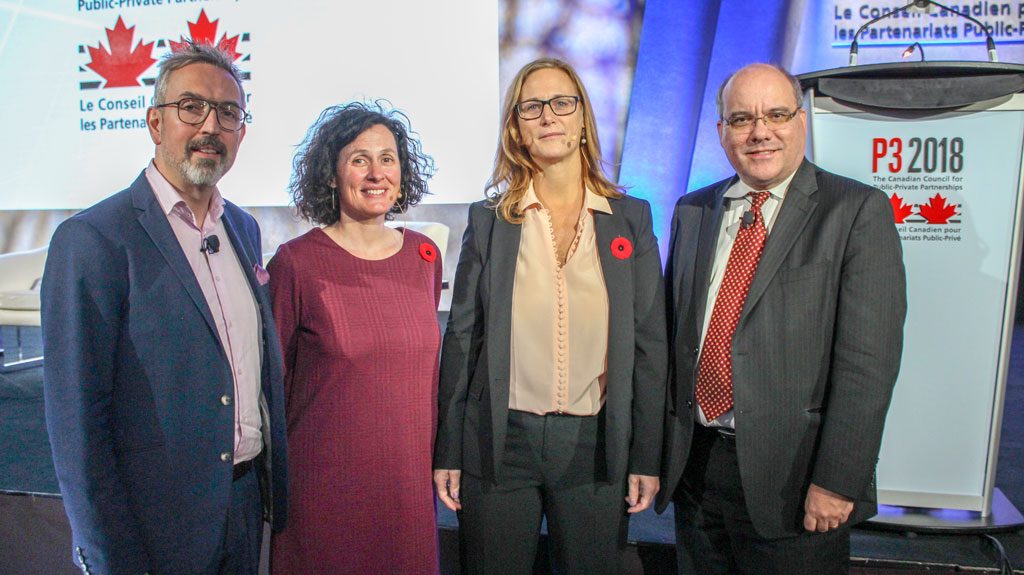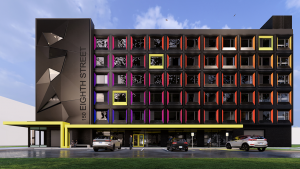Smart cities are brimming with potential but come with caveats.
A group of smart city experts spoke at a panel during the Canadian Council for Public-Private Partnerships recent national conference held in Toronto.
The group picked apart the challenges and potential of “upgrading” a city from both a technological and societal standpoint.
One of the major challenges of building a smart city or community is defining it, said World Bank senior director of social, urban, rural and resilience global practice Ede Ijjasz-Vasquez.
“There’s 100 definitions for a smart city, and we tried to just look at what was working well,” Ijjasz-Vasquez said.
Various stakeholders exist in silos that don’t talk to each other, he added, but technology can act as an impetus to begin dialogue.
“Technology alone doesn’t solve anything, but interconnectedness becomes really important,” Ijjasz-Vasquez said.
He added technology can also change the relationship between a city and its citizens.
We don’t know right now what a smart city will be used for, but we see the potential
— Gunnar Edwin Crawford
City of Stavanger, Norway Head
“You go from communication through elections every four years to real time, two-way conversation indicating what citizens need,” he said.
Ryerson University School of Urban and Regional Planning associate professor Pamela Robinson said she is engaged in two research projects, one to determine if smart cities are “smart for all, or only for some,” and the other studying the future of artificial intelligence (AI) and machine learning software for municipalities.
City departments are generally not familiar with AI, she said, and don’t have processes in place to implement technological solutions.
“It’s much easier to buy Zambonis and photocopiers for a municipality than machine learning software,” Robinson said.
Gunnar Edwin Crawford, the head of the city of Stavanger, Norway’s smart city project, said the biggest challenge in creating a road map document involving academia, the private sector and other participants was a lack of communication.
“It’s hard. You have all these experts, but they don’t talk to one another,” he said, adding he “spent 70 per cent of the time trying to break down barriers.”
Crawford said opening data streams was also important.
“We want to be transparent, but it also lets the private sector look at our data and find solutions,” he said.
An office has been established by the city and is testing out a “shotgun approach” to test which smart city development methods work for them.
“We don’t know right now what a smart city will be used for, but we see the potential,” Crawford said.
Robinson said there is a tendency to look at smart city solutions as a template that responds to the needs of communities regardless of location or regional conditions.
“So you have to be ‘smart city-ish’ and reproduce the spirit of the project, but adapt for each community,” she said.
“The most important thing is to document the failures,” Ijjasz-Vasquez added. “One of the most difficult parts of a partnership is to tell what didn’t work.”
Technology itself can get ahead of a smart project, he said, citing a project in India where the World Bank advised on installation of “last mile” telephone poles.
“We greenlit the project, and then someone said ‘maybe we should look at mobile technology’ and it saved us $200 million,” Ijjasz-Vasquez stated.
Even at the government level, moderator and federal deputy minister of infrastructure and communities Kelly Gillis said there is a willingness to experiment and discover what works.
The federal government introduced the Smart Cities Challenge program in November 2017 as a call for communities across the nation to submit ideas judged by a 13-person jury. To date 20 projects have been selected and a total of $65 million in funding has been allocated in the form of four prizes. The winners will be announced in spring 2019.
“The Smart Cities Challenge was a bit of an experiment, to be frank. We didn’t know the biggest issues and challenges communities were facing, and we wanted them to tell us,” Gillis said.
All the panel participants agreed privacy was a key principle when developing a smart city.
“This is a constant discussion. We maintain data on all our citizens and we need to be trusted with that,” Crawford said. “We have to be very careful in the way we handle the data side of it all.”
“We’re building trust by having conversations about privacy,” Ijjasz-Vasquez added.
“You have to do more work in public before making a decision. Build momentum and don’t be afraid to go with a work in progress,” Robinson said.
“Smaller steps and more in public.”











Recent Comments
comments for this post are closed